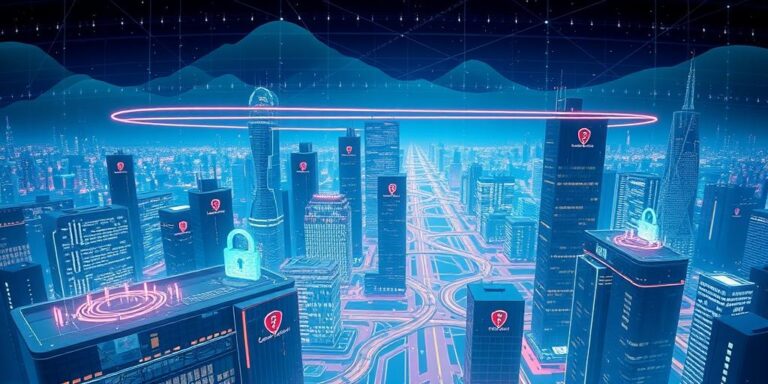Securing Smart Cities: A Monumental Task for 2028
Smart cities are rapidly evolving, promising enhanced urban living through interconnected devices and systems. As we approach 2028, the challenge of securing these complex networks becomes increasingly critical. This post explores the monumental task of ensuring the cybersecurity of smart cities, examining the key areas of concern and strategies for robust protection.
Understanding the Smart City Ecosystem
Smart cities integrate various technologies, including IoT devices, data analytics, and communication networks, to improve services such as transportation, energy, and public safety. These systems rely on a constant flow of data, making them vulnerable to cyber threats.
Key Areas of Cybersecurity Concern
- IoT Device Vulnerabilities: The proliferation of IoT devices introduces numerous entry points for cyberattacks. Many of these devices have weak security protocols, making them easy targets for hackers.
- Data Privacy and Security: Smart cities collect vast amounts of personal data. Protecting this data from unauthorized access and misuse is paramount to maintaining public trust.
- Network Infrastructure: The interconnected nature of smart city networks means that a single breach can have widespread consequences, disrupting essential services and causing chaos.
- Legacy Systems: Integrating new technologies with existing infrastructure can create compatibility issues and security gaps if not managed carefully.
- Lack of Standardization: The absence of universal security standards complicates the task of securing smart cities. Different vendors and municipalities may implement varying levels of protection, creating inconsistencies and vulnerabilities.
Strategies for Securing Smart Cities
- Robust Cybersecurity Frameworks: Implementing comprehensive cybersecurity frameworks that align with industry best practices and regulatory requirements is essential. These frameworks should include regular risk assessments, security audits, and incident response plans.
- Advanced Encryption Techniques: Employing strong encryption methods to protect data both in transit and at rest can prevent unauthorized access and ensure data integrity.
- Multi-Factor Authentication (MFA): Implementing MFA for all critical systems can significantly reduce the risk of unauthorized access by requiring multiple forms of verification.
- Regular Software Updates and Patch Management: Keeping software and firmware up to date with the latest security patches is crucial for addressing known vulnerabilities and preventing exploits.
- Network Segmentation: Dividing the network into smaller, isolated segments can limit the impact of a successful cyberattack by preventing it from spreading to other parts of the city’s infrastructure.
- Employee Training and Awareness: Educating city employees and residents about cybersecurity threats and best practices can help prevent social engineering attacks and other forms of cybercrime.
- Collaboration and Information Sharing: Sharing threat intelligence and best practices among cities, government agencies, and private sector partners can enhance overall cybersecurity posture.
Looking Ahead to 2028
As we move closer to 2028, the need for proactive and adaptive cybersecurity strategies will only intensify. Smart cities must prioritize security at every stage of development, from the initial design to ongoing operations. By addressing the key areas of concern and implementing robust protection measures, we can ensure that smart cities are not only innovative and efficient but also secure and resilient.




